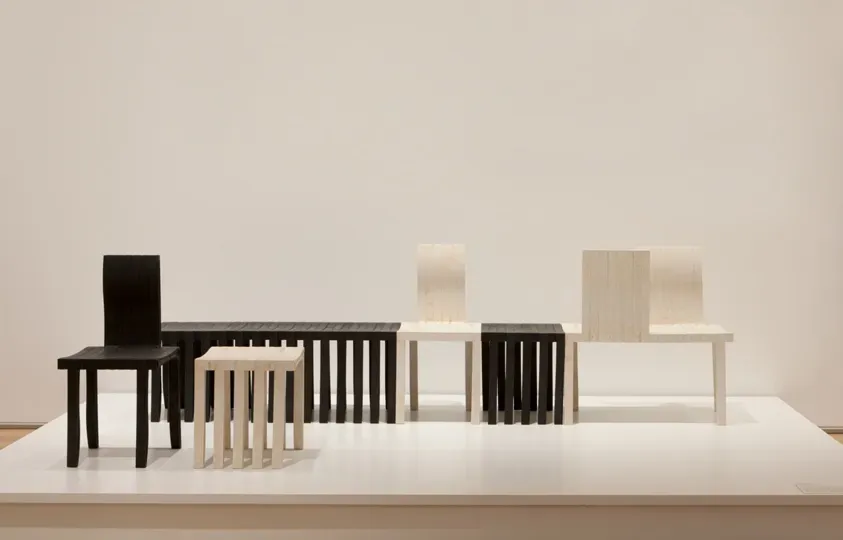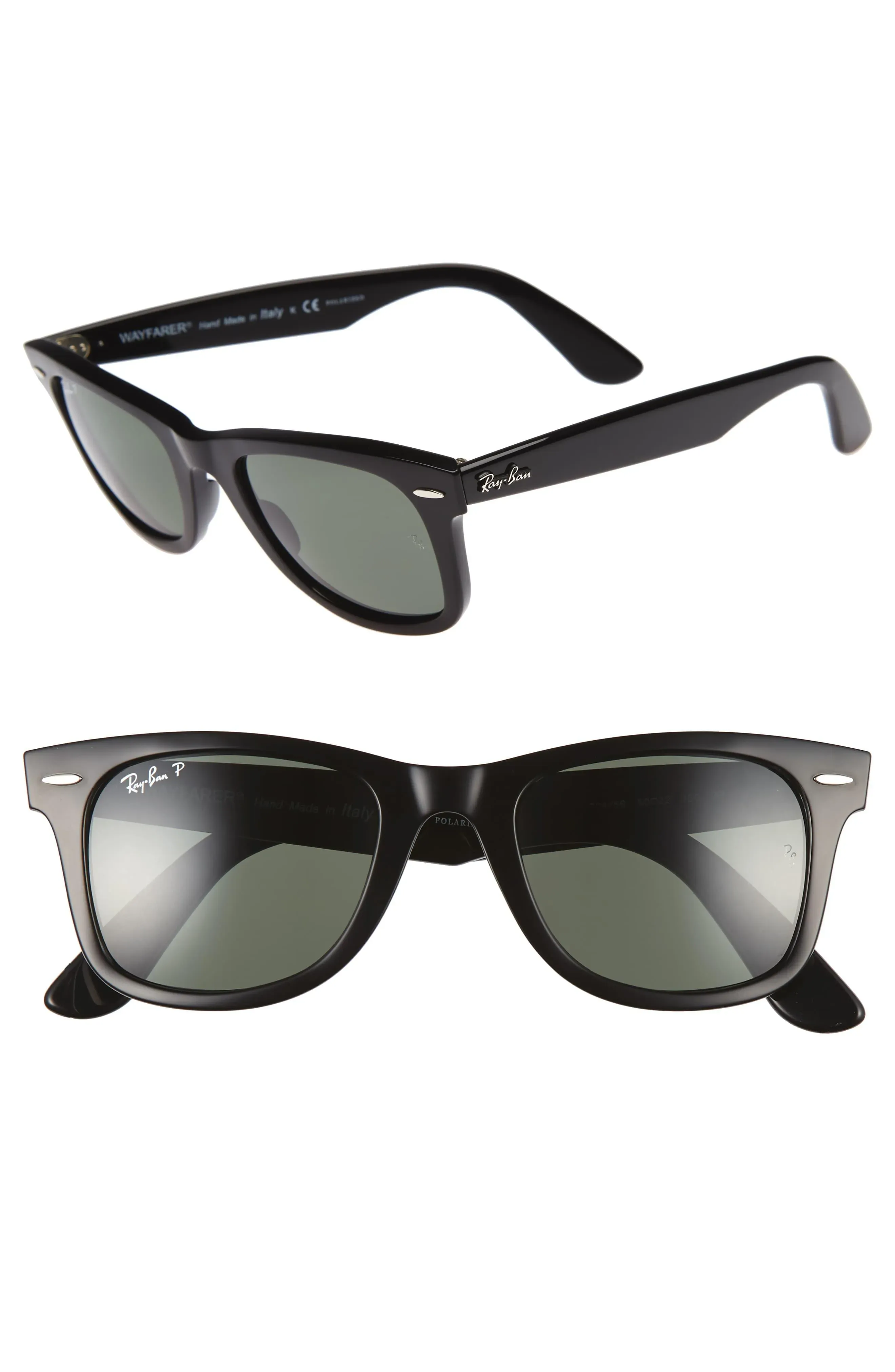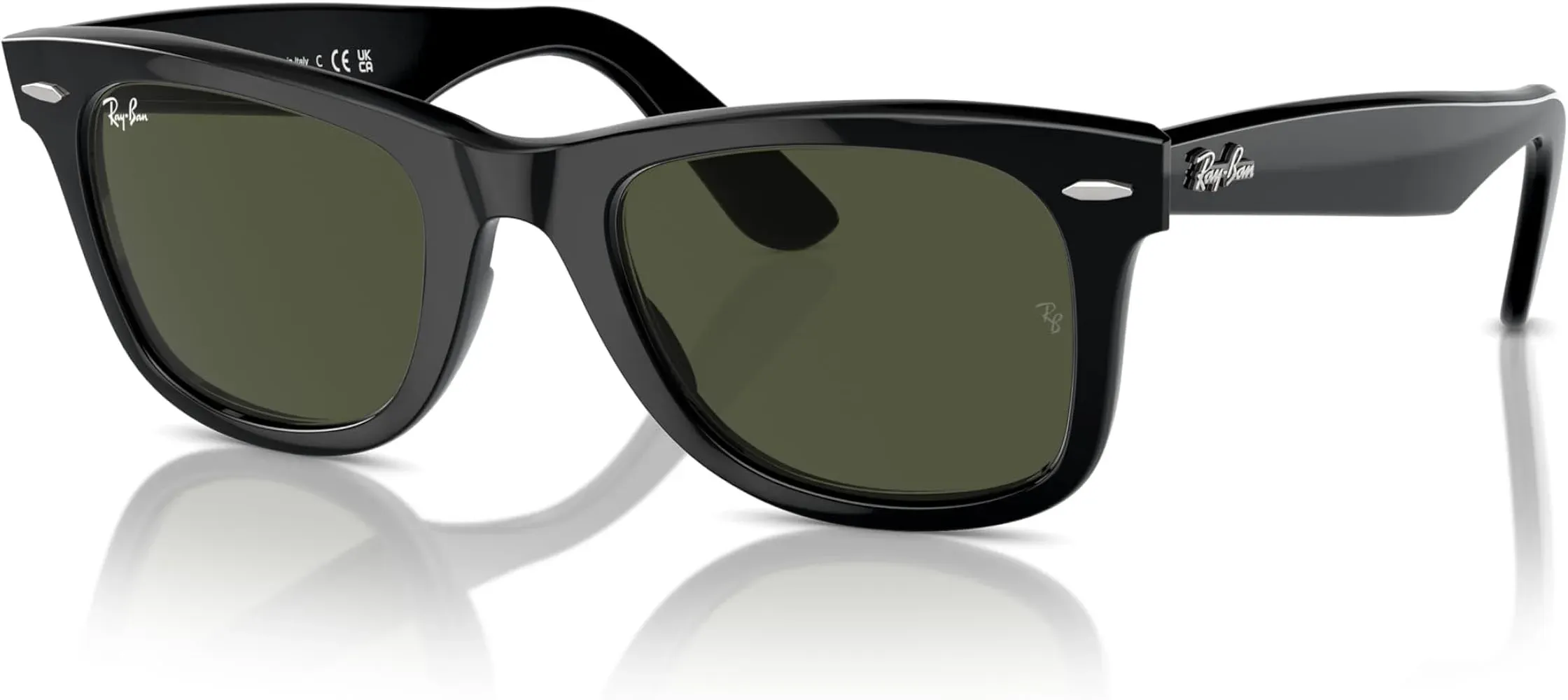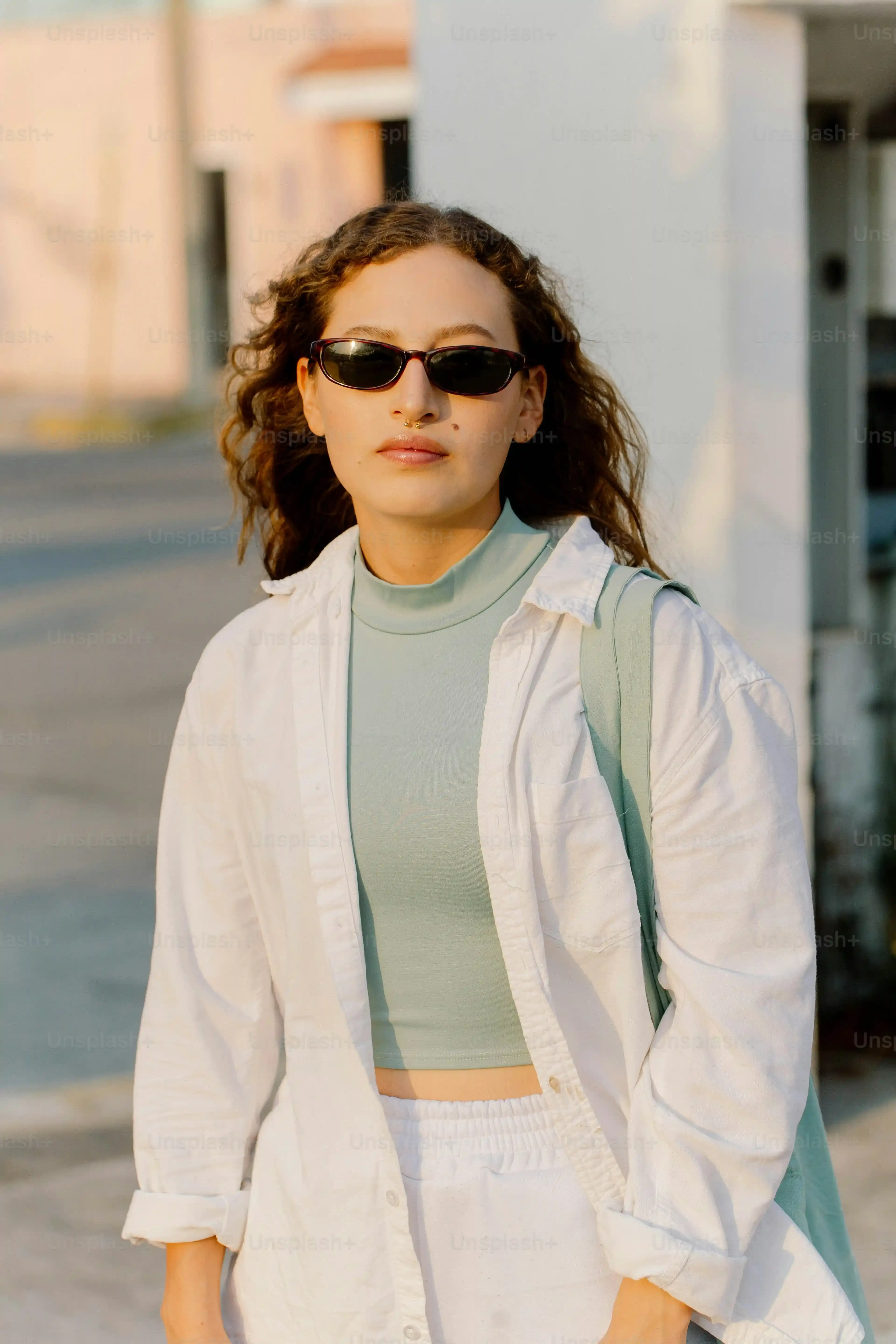Table of Contents
Walk down any street, flip through old photos, or watch a classic movie, and chances are you'll spot a pair of Ray-Ban sunglasses. They aren't just eye protection; they've become a bona fide cultural icon, perched on the noses of everyone from rock stars to presidents, rebels to regular folks grabbing coffee. For decades, the name Ray-Ban has been synonymous with effortless cool and enduring quality in the world of eyewear.
The Story Behind RayBan Sunglasses
The Story Behind RayBan Sunglasses
So, you want to know how Ray-Ban sunglasses became *the* sunglasses? It all started in the late 1920s. US Army Air Corps pilots were flying higher and faster than ever before. The intense glare from the sun at high altitudes was causing serious headaches and nausea. Standard goggles just weren't cutting it.
They needed something better. Something that could block out that blinding light without obscuring vision. Bausch & Lomb, a medical equipment company based in Rochester, New York, got the call. The military challenged them to create a type of eyewear that would specifically combat high-altitude sun glare for pilots.
It took several years of research and development. Bausch & Lomb chemists and technicians worked on developing a lens that could filter light effectively. They finally landed on a dark green lens that could absorb yellow and green light while still allowing a wide field of vision. This was a game-changer.
In 1936, they introduced the first prototype, initially called "Anti-Glare" lenses. They were set into a lightweight, metal frame. The design was practical, built for performance in demanding conditions. This wasn't about fashion yet; it was about function and necessity for pilots pushing the boundaries of flight.
By 1937, these specialized glasses were made available to the public. And that's when the name "Ray-Ban" was officially born. Get it? They *banished* the sun's *rays*. Simple, effective, and memorable. The first widely available model was the Aviator, directly based on the glasses designed for pilots. It featured the signature large teardrop-shaped lenses to cover the maximum field of vision.
It wasn't long before actors, athletes, and the general public started noticing these cool, functional glasses. General Douglas MacArthur famously wore Aviators when he landed in the Philippines during World War II, solidifying their image as tough and heroic. This kind of organic celebrity endorsement, born out of real-world use, gave Ray-Bans an authenticity that marketing dollars can't buy.
What's fascinating is how quickly they moved from military necessity to civilian cool. It wasn't a forced trend; people saw them on heroes and pioneers and wanted a piece of that action. It shows how genuine innovation, when paired with a bit of public visibility, can create a legend.
Think about it: a problem faced by pilots led to a solution that became a global style icon. That's a pretty neat origin story for a pair of sunglasses.
- 1929: US Army Air Corps tasks Bausch & Lomb with creating anti-glare glasses.
- 1936: "Anti-Glare" prototype is developed with green lenses.
- 1937: Ray-Ban brand is officially launched with the Aviator model.
- WWII: Aviators gain popularity through military figures like General MacArthur.
Decoding Iconic RayBan Sunglasses Styles
Decoding Iconic RayBan Sunglasses Styles
The Enduring Cool of the Aviator
so we touched on the Aviator's roots with the pilots. But seriously, how did a pair of functional flying glasses become *the* symbol of cool? It wasn't just MacArthur. Think about Tom Cruise in Top Gun. That single movie arguably cemented the Aviator's place in pop culture history. The large, often green or G-15 lenses, the thin metal frame, the double or sometimes triple bridge – it's a look that just works.
The design isn't accidental. Those big lenses offer maximum coverage, crucial for pilots needing an unobstructed view, and handy for civilians wanting to shield their eyes (or maybe hide a late night). The thin frame is lightweight and comfortable, designed to fit under flight helmets, which translates well to wearing them all day. They project a certain confidence, a bit of mystery. They say, "I know what I'm doing," even if you're just fumbling for your car keys.
Wayfarer and Clubmaster: Beyond the Cockpit
While the Aviator was soaring, Ray-Ban wasn't resting on its laurels. In 1952, they dropped the Wayfarer, and the world got a different kind of cool. No metal frames here; the Wayfarer introduced a chunky, acetate frame that was revolutionary for its time. It was less military, more rebellious, quickly adopted by musicians, artists, and Hollywood stars.
Think Audrey Hepburn in Breakfast at Tiffany's or James Dean. The Wayfarer became synonymous with the burgeoning counter-culture and youth movements of the 50s and 60s. Then came the Clubmaster in the 1980s, bringing back a touch of retro style with its distinctive browline design – plastic on top, metal on the bottom. Each style has its own personality, but they all share that unmistakable Ray-Ban DNA of quality and timeless design.
Picking between them can feel like choosing a personality. Are you the adventurous Aviator type, the classic rebel Wayfarer, or the intellectual retro Clubmaster? Or maybe something else entirely from the extensive Ray-Ban lineup? At sunglasshub.org, exploring these options is part of the fun.
Style | Key Feature | Era of Peak Popularity |
|---|---|---|
Aviator | Teardrop lenses, metal frame | WWII, 1980s (Top Gun) |
Wayfarer | Thick acetate frame | 1950s-60s, 1980s |
Clubmaster | Browline frame (plastic top, metal bottom) | 1980s, 2010s (Resurgence) |
What Makes RayBan Sunglasses Worth It?
What Makes RayBan Sunglasses Worth It?
Craftsmanship and Materials
Alright, let's talk brass tacks. Why do Ray-Ban sunglasses often come with a higher price tag than the random pair you grab off a spinner rack at the pharmacy? It boils down to how they're made and what they're made of. We're not talking about flimsy plastic that snaps if you look at it wrong.
Ray-Ban uses quality materials. Think durable acetate for the Wayfarers and Clubmasters, which isn't just molded plastic but often cut from sheets and hand-polished. The metal frames, especially for the Aviator, are typically Monel, a corrosion-resistant alloy, or titanium in some higher-end models. The hinges aren't just cheap press-fit bits; they're often seven-barrel hinges, screwed together for robust durability. These aren't built to be disposable; they're built to last, assuming you don't sit on them.
Lens Technology and Protection
Beyond the frame, the lenses are where a significant chunk of the value sits. Ray-Ban didn't become famous because they looked neat; they became famous because they *worked*. Their standard G-15 lens, developed for pilots, blocks 85% of visible light and provides remarkable color clarity and contrast. It's a neutral grey-green that doesn't distort your view of the world, just makes it less blinding.
They also offer polarized lenses, which are crucial for cutting glare off surfaces like water, snow, or asphalt – a godsend if you drive or spend time outdoors. Then there are gradient lenses, mirrored lenses, chromance lenses that enhance color and contrast, and photochromic lenses that change tint with light conditions. It's a whole menu of options designed for actual eye protection and improved vision, not just aesthetics. You're paying for science and engineering that keeps your eyeballs happy and healthy.
What level of UV protection do you actually need?
- Look for "UV 400" or "100% UV protection".
- This means they block light rays up to 400 nanometers, covering both UVA and UVB rays.
- Ray-Ban sunglasses consistently meet or exceed these standards.
- Cheap sunglasses might look dark but offer minimal or no UV protection, potentially doing more harm than good.
Timeless Style and Investment
let's be real. Part of the "worth it" factor for Ray-Ban sunglasses is the style. These designs haven't just stayed relevant; they've become classics. An Aviator from the 1940s looks remarkably similar to one sold today. A Wayfarer from the 1950s isn't drastically different from a current model. This isn't fast fashion; it's enduring design.
Buying a pair isn't just buying a trend; it's buying into a legacy. They complement almost any outfit and project a certain effortless cool that's hard to replicate. While they might cost more upfront, their durability and timeless appeal mean you won't feel the need to replace them every season. Consider it less of an expense and more of an investment in a piece of functional style history that actually protects your eyes.
Picking Your Perfect Pair of RayBan Sunglasses
Picking Your Perfect Pair of RayBan Sunglasses
Finding the Right Fit for Your Face and Vibe
Alright, so you've seen the history, you know the icons – Aviator, Wayfarer, Clubmaster. Now comes the fun part, or maybe the slightly overwhelming part: choosing *your* pair of Ray-Ban sunglasses. It's not just about grabbing the one your favorite celebrity wears. It's about finding the shape that complements your face and the style that matches your personality. Got a round face? Angular frames like the Wayfarer or some square styles can add definition. If your face is more square or angular, the softer curves of an Aviator or a round frame can balance things out. Oval faces? Lucky you, most styles tend to work. Heart-shaped? Look for styles that are wider at the bottom or have detailing there.
But beyond face shape, think about your personal style. Are you classic and understated? An Aviator or original Wayfarer might be your go-to. More retro or intellectual? The Clubmaster has that covered. Feeling bold? Maybe a colored frame or mirrored lens is in order. Don't just follow trends; pick something that feels like *you*. These are sunglasses you're hopefully going to wear for years, so make sure they feel right.
Choosing the Right Lens for Your World
The frame gets the attention, but the lenses do the real work. Ray-Ban offers a bewildering array of lens types, and picking the right one depends on what you'll actually be doing while wearing them. The classic G-15 is a fantastic all-rounder, providing natural vision and excellent glare reduction. But if you're constantly battling reflective surfaces – think driving on wet roads, skiing, or being on the water – polarized lenses are practically mandatory. They cut horizontal glare like a hot knife through butter, making a huge difference in comfort and visibility.
Then there are gradient lenses, which are darker at the top and lighter at the bottom, useful for driving as they shield the upper field of vision from the sun while allowing you to see your dashboard clearly. Mirrored lenses offer maximum glare protection and a bit of anonymity (great for people-watching). Chromance lenses are designed to boost color, contrast, and clarity. Don't just pick based on color; think about function. Your eyes will thank you.
Face Shape | Recommended Ray-Ban Styles |
|---|---|
Round | Wayfarer, Square, Geometric frames |
Square | Aviator, Round, Oval frames |
Oval | Most styles work well |
Heart-Shaped | Aviator, Clubmaster, Cat-eye (wider at bottom) |
Checking the Details: Quality and Authenticity
Once you've narrowed down style and lens, pay attention to the details. Ray-Ban sunglasses aren't cheap, and unfortunately, there are plenty of fakes out there. A genuine pair feels solid. Check the hinges – they should be sturdy, often with seven barrels, and screwed in, not just molded plastic pins. Look for the small "RB" logo etched subtly into one lens (usually the left) and the Ray-Ban logo on the other. The logo on the temple should be inlaid or raised, not just printed on sloppily. The packaging matters too – they should come with a quality case, cleaning cloth, and proper documentation.
Feel the weight. Feel the finish of the frame. Does it feel cheap and plasticky, or substantial and well-made? Authentic Ray-Bans have a certain heft and finish that's hard for counterfeits to replicate perfectly. Taking a moment to inspect these small things can save you from buying a fake and ensure you're getting the quality you're paying for. After all, you're investing in a classic piece of eyewear.
The Last Word on Ray-Ban Sunglasses
So, there you have it. Ray-Ban sunglasses aren't just another accessory; they're a piece of design history, a statement, and for many, a reliable piece of gear for protecting your eyes while looking sharp. Their continued relevance isn't just about nostalgia; it's built on solid construction, timeless aesthetics, and a reputation earned over decades. Whether you lean towards the Aviator's classic cool, the Wayfarer's rebel edge, or something else entirely, choosing a pair is less about chasing trends and more about finding a style that feels right for you. They’ve stood the test of time for a reason, proving that sometimes, the originals are still the best investment.
